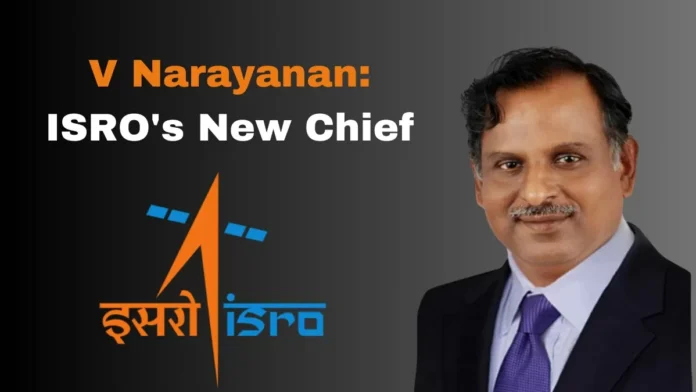V Narayanan ISRO New Chief: The central government on Tuesday appointed space scientist V. Narayanan as the new chairman of the Indian Space Research Organization (ISRO). He has also been made the secretary of the Department of Space. He will replace ISRO chief S. Somnath on January 14.
Narayanan’s tenure will be of 2 years. Currently, he is the director of Liquid Propulsion System Center (LPSC) located in Valiyamala. Narayanan has 40 years of experience. He is an expert in rocket and spacecraft operations.
Table of Contents

V Narayanan held several key positions in ISRO and worked on developing the propulsion systems for GSLV Mk-III, Chandrayaan-2 and Chandrayaan-3.
(File Photo)
Achievements of V. Narayanan
- V. Narayanan joined ISRO in 1984. For the first 4.5 years, he worked at the Vikram Sarabhai Space Centre (VSSC), where he contributed to the development of the Augmented Satellite Launch Vehicle (ASLV) and Polar Satellite Launch Vehicle (PSLV).
- In 1989, he completed his M.Tech in Cryogenic Engineering from IIT Kharagpur. Afterward, he began working at LPSC (Liquid Propulsion Systems Centre). Under his leadership, LPSC delivered 183 LPS cryogenic power plants for various ISRO missions.
- He served as the director of the C25 cryogenic project under GSLV Mk III.
- Under his supervision, the second and fourth stages of PSLV were developed, including the PSLV C57 and the cryogenic power plant.
- He also contributed to the propulsion systems for Aditya L-1 spacecraft, Chandrayaan-2, and Chandrayaan-3.
Awards and Honors
- Silver Medal from IIT Kharagpur,
- Gold Medal from the Astronautical Society of India (ASI),
- National Design Award from NDRF.
S. Somnath’s retirement on January 14
ISRO’s current chairman S. Somnath took over as ISRO chairman on 14 January 2022. He is retiring after a tenure of 3 years. ISRO created history during his tenure. ISRO not only landed Chandrayaan-3 on the South Pole of the Moon, but also sent Aditya-L1 to study the Sun at the Lagrange point 15 lakh km above the Earth.
S. Somnath have cancer

S Somnath (60) told a media house in an interview on March 4, 2024 that he had cancer. My health was not well since the time of Chandrayaan-3 launch (23 August 2023). However, nothing was clear then. I also did not have any clear information about it (cancer).
V. Narayanan: Career
Narayanan joined ISRO in 1984, initially working in the Solid Propulsion area for Sounding Rockets, Augmented Satellite Launch Vehicles (ASLV), and Polar Satellite Launch Vehicles (PSLV) at the Vikram Sarabhai Space Centre (VSSC). He contributed to process planning, control, and realization of ablative nozzle systems, composite motor cases, and composite igniter cases.
In 1989, after completing his M.Tech., he transitioned to the Cryogenic Propulsion area at the Liquid Propulsion Systems Centre (LPSC). Narayanan played a crucial role in the development of India’s cryogenic propulsion systems, contributing to the successful development and testing of sub-systems such as the gas generator, sub-scale cryogenic engines, and thrust chambers. His efforts were instrumental in making India one of the few countries with indigenous cryogenic propulsion technology.
As the Project Director of the C25 Cryogenic Project, Narayanan provided techno-managerial leadership in designing and developing the C25 Cryogenic Propulsion System for the GSLV Mk-III Launch Vehicle. Under his guidance, the system was developed in a short time frame and successfully inducted into the GSLV Mk-III vehicle.
In 2018, he became the Director of LPSC, overseeing the development of liquid, semi-cryogenic, and cryogenic propulsion stages for launch vehicles, as well as chemical and electric propulsion systems for satellites. During his tenure, LPSC delivered 164 liquid propulsion systems for 41 launch vehicle and 31 spacecraft missions over five years.
(V. Narayanan: Career, content courtsy – Wikipedia)

